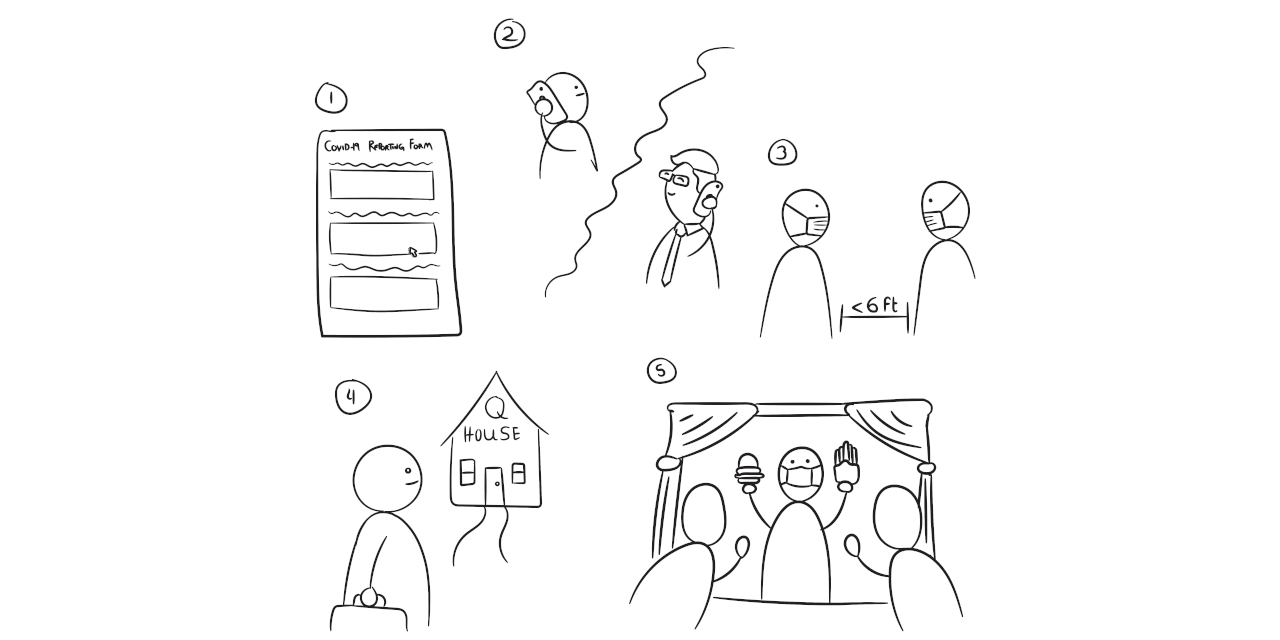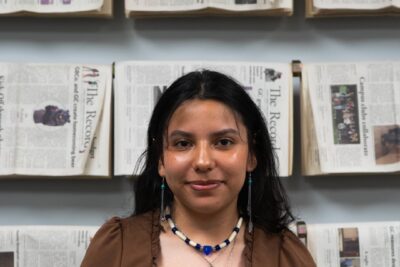There is more to contact tracing than filling out Goshen College’s COVID-19 reporting form.
Behind the scenes, Kevin Miller, lead contact tracer; Beka Prince, events office coordinator; and Mara Beck, student involvement coordinator, are busy keeping track of those in quarantine, isolation and those still awaiting results. Currently, there are 109 individuals who fall under one of these categories.But how does contact tracing really work at Goshen College?
An individual first fills out the COVID-19 reporting form and receives a call from Kevin Miller who then passes information about the individual to either Prince or Beck.
“All positive cases get reported to the State of Indiana and they are officially responsible to do contact tracing,” Miller said. “They, theoretically, call the individual who tested positive and do all the same questioning that we do.”
Next, Miller, Prince and Beck work with positive students to deem who may be “contacts.”
A contact is someone who has come within six feet of the symptomatic person for 15 minutes or moreover the course of a day.
“So if you spend five minutes with the person three times over the course of the day, then you’re considered a contact,” Prince said.
When a student is deemed a contact it doesn’t mean others who were in contact with them will now have to quarantine.
“With contact tracing, you’re looking for…the person who’s tested positive, and then their contacts,” Prince said. “So the contacts that I call, none of them are sick. That’s because the virus, if they have already caught the virus from the person who is sick, hasn’t had enough time to build up in their system yet to the point where they are contagious, usually. That’s why we get them before they become contagious. So the contact of a contact is not a contact.”
Finally, students who are identified as “contacts” are moved to designated quarantine locations for 14 days.
“Since we’ve gotten full lately, it’s a little iffy on where they’ll actually end up going,” Prince said.
The quarantine lasts 14 days because that is the incubation period of the virus, meaning it can take up to 14 days for an individual to experience symptoms or test positive after being in contact with COVID-19.
Once in quarantine, a GC advocate is responsible for checking in on students and helping them move if they’re a residential student.
“Their GC advocate is either Zachary Frank, residence life coordinator, Phil Brown, residence life coordinator, or Lauren Ford, student involvement coordinator,” Prince said. “They’re all checking in on the students in quarantine and isolation, making sure that they have access to their meals and access to their classes, and checking in on their symptoms and making sure they’re doing all right.”
“I keep track of all cases and quarantine individuals on a tracking spreadsheet,” Miller said. “And as we approach the end of the 14 days, I or one of the Residence Life coordinators checks in to confirm that the individual is symptom free and we confirm their release from quarantine.”
The spike in cases on campus last week made the COVID-19 reporting form even more essential.
“During the peak of the recent surge last week, it could have been 15-20 forms per day,” Miller said. “Monday saw 12, Tuesday 4, and so far on Wednesday I’ve seen 5-6…It’s a lot to keep track of.”
All members of the contact tracing team have spent a significant amount of time preparing for this role.
“Each of [the contact tracers] went through a five-hour online course from Johns Hopkins University,” Miller said. “It covered all the definitions of who is identifiable as a contact and then parameters around how isolation works and how quarantine works. It also included some significant sections on communication and establishing rapport with the person you’re working with because in many cases, you’re contacting somebody who is going to be receiving hard news.”
GC recommends documenting each contact at the end of the day as part of the daily self screening checklist.
Mackenzie Miller contributed to this article.




